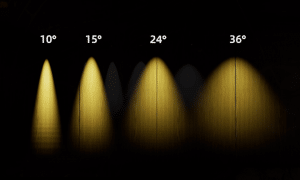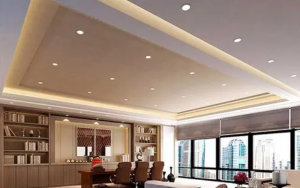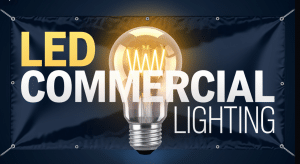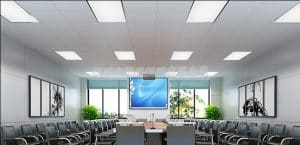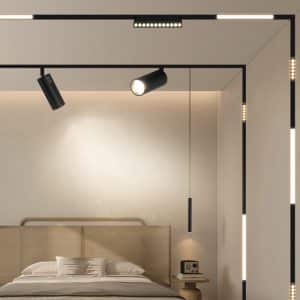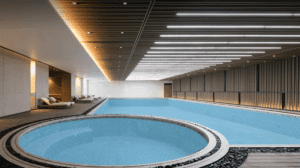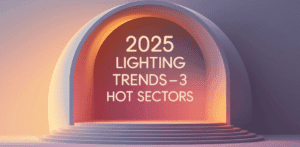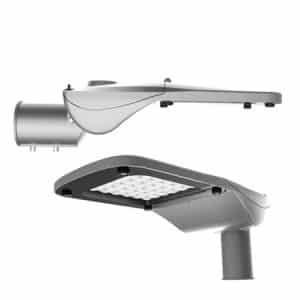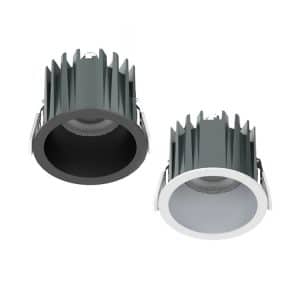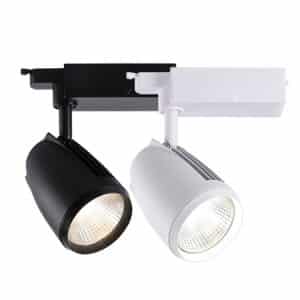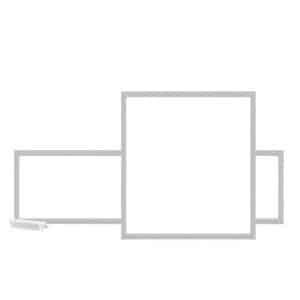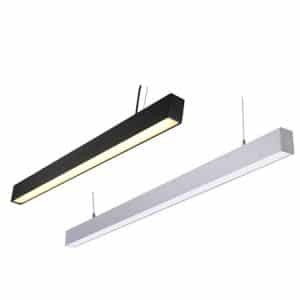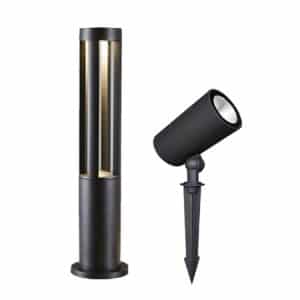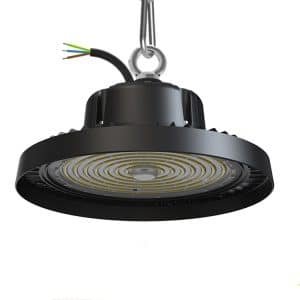Supermarkets Lighting
Supermarkets, focusing on fresh food and daily items, seek to lower operating costs due to fierce competition. Electricity bills are a major expense, making LED lighting a key choice for energy efficiency. Effective lighting attracts customers, enhances sales, and contributes to store design.
Supermarkets are composed of different subdivisions, each of which has different choices and requirements for lamps. First we will see :
Supermarket Lighting Standards
Lighting standards for supermarkets are essential to ensure proper illumination, energy efficiency, and the visual comfort of shoppers. These standards may vary by region, but some common principles and guidelines include:
- Illuminance Levels: The lighting should provide adequate illuminance levels for various areas within the supermarket. For example:
- General Aisles: Aim for around 50-75 foot-candles (500-800 lux).
- Fresh Produce Sections: Higher illuminance levels of 75-100 foot-candles (800-1000 lux) are often preferred to highlight colors and freshness.
- Checkout Counters: About 50-100 foot-candles (500-1000 lux) to facilitate transactions.
- Color Rendering: The lighting should have a high Color Rendering Index (CRI) to accurately represent the colors of products. A CRI of 80 or higher is often recommended.
- Uniformity: Lighting should be uniform to avoid shadows, dark spots, or over-illumination. Aim for a uniformity ratio of around 0.7 to 0.9.
- Glare Control: Minimize glare, especially in areas with computer screens or glossy surfaces, to enhance the visual comfort of shoppers and staff.
- Emergency Lighting: Install emergency lighting systems to provide illumination in case of power outages or emergencies.
It’s essential to consider the specific layout and needs of the supermarket when implementing lighting standards to create a well-lit, energy-efficient, and customer-friendly shopping environment. Local regulations and standards may also dictate specific requirements, so it’s important to consult with relevant authorities or lighting experts in your region.
Types of Lighting Fixtures used for different Area
The Office Area
The office area generally contains the daily work of the supermarket management office and other personnel. LED lamps are required to meet general lighting needs while protecting the eyesight of workers. The color temperature is 6000-6500K cold white so that people can stay awake and focus on work.
Recommended lights: LED panel lights or Pendant Linear lighting.
Cargo Warehouses
The warehouse of the supermarket brings together almost all categories of goods. The application environment is more complicated and requires the use of LED batten or high bay lights with an IP65 waterproof rating and above. If the installation height of the supermarket lamps is low, LED batten is more suitable. High bay lights are suitable for installation in warehouses with a height of more than 5 meters. The color temperature needs to use the middle and high color temperature of 4000-6500K, which is convenient for the staff and clean.
Recommended Lights: Weatherproof LED light fixture, high bay LED lights.
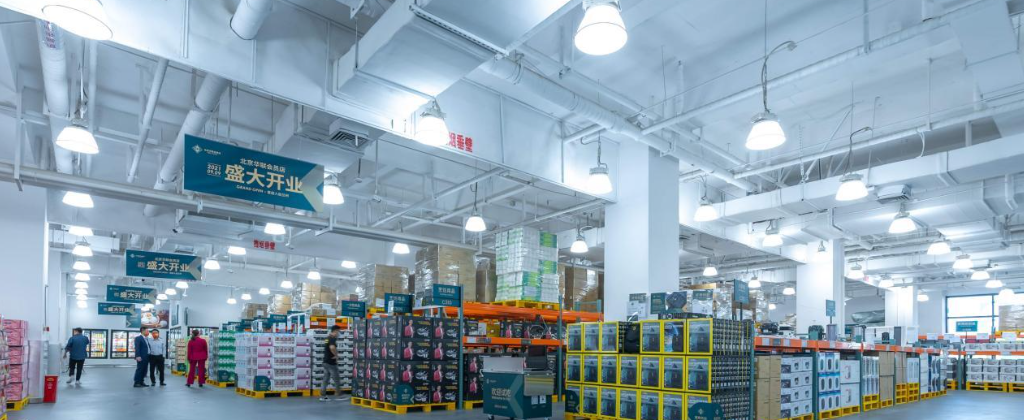
The shelf area
The shelf area is the main area of supermarket merchandise sales. It needs to take into account the lighting in all directions so that all merchandise has the opportunity to be seen and purchased by consumers. Therefore, shelf area lighting is the key area of supermarket lighting. Due to the close distance between the shelves, the lighting should avoid shadows and make it easy to find products. The aisle between the shelves can use 4000-6500K color temperature linear lights or LED batten as the main lighting, while auxiliary track lights can be used for local and accent lighting of the goods on the shelves.
Recommended lights: LED Track Lights, linear LED lights.
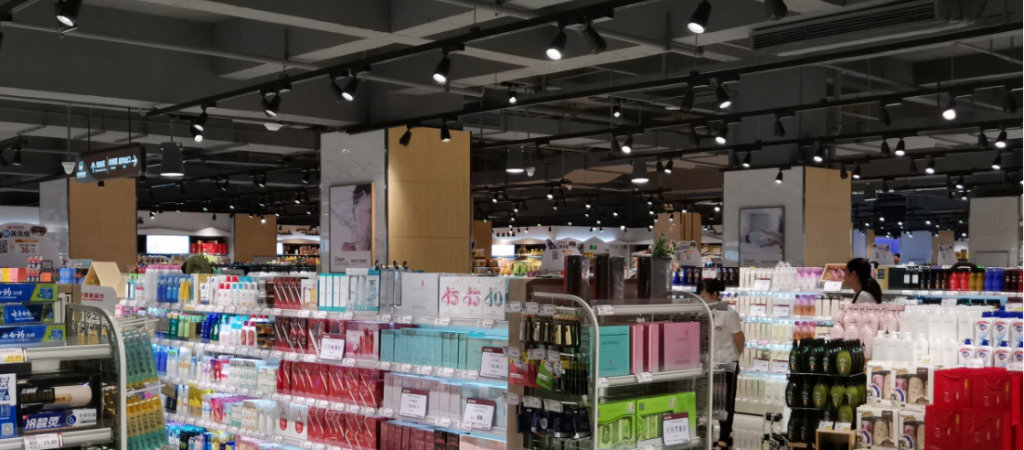
The fruit and vegetable area
The lighting in this area must not only ensure the perfect presentation of the goods but also consider the impact of temperature on the shelf life of the goods. Here, LED lighting with low heat generation should be selected as far as possible to cause the moisture loss of fresh vegetables and fruits and lose their freshness. For the fruit area, usually, a medium beam spotlight can create a good display effect, highlighting the shape, material, and color of the fruit. Then use narrow beam spotlights to highlight the products you want to display or promote sales. It is suitable to use 3000K warm color lamps with high CRI, which can better restore the true color of fruits, and increase the color value of fruits and consumers’ desire to buy. The vegetable area is suitable for using a 6000-6500K cold light source with high CRI.
Recommended lights: LED Track lights
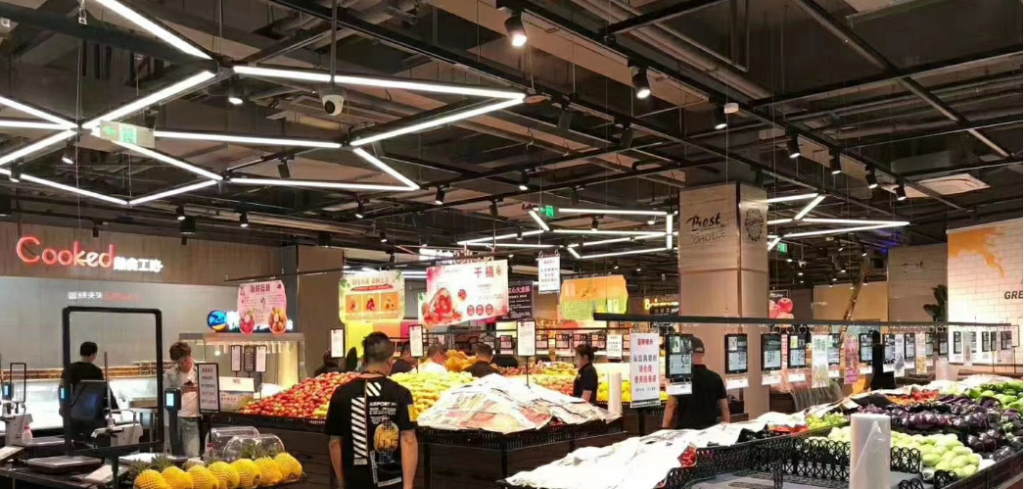
The freezing area
The temperature in this area is generally low and there is a lot of water vapor around. From a safety perspective, low-voltage LED lighting is generally used, and the IP grade should be IP54 at least. For the freezer, hidden LED linear lighting can be used. For the seafood freezing area, it is suitable to use track lights with a color temperature above 6500K with high CRI for lighting. The higher the color temperature, the more vivid the color of the seafood products.
Recommended lights: T5/T8 LED Tube lights or rigid LED strip lights.
The Cashier Area
The checkout area should highlight the visual guidance to consumers so that they can easily find the area and complete the purchase. Usually, this area has a lot of people, and the cashier is generally always working with high intensity. It is most important for the cashier to clearly see the goods and coins, and at the same time to ensure that consumers can easily read the content on the cashier slip. Therefore, 6000-6500K color temperature LED batten LED panel lights are very suitable for installation in this area.
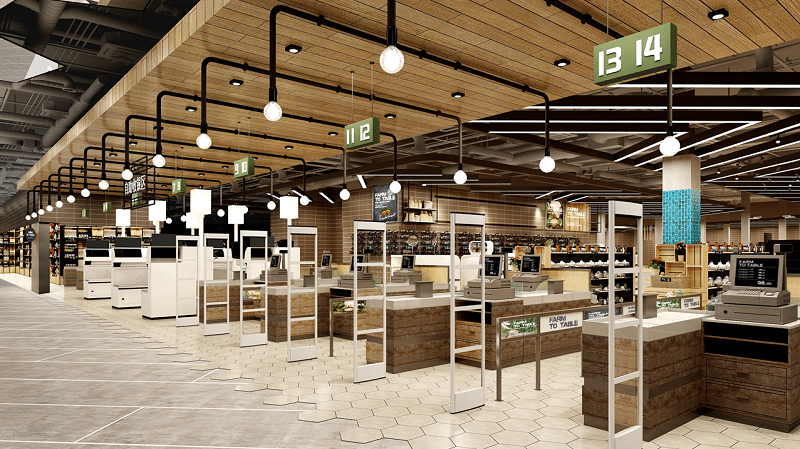
Conclusion
Generally, for supermarket lamps, high CRI is necessary, which is conducive to restoring the true color of the goods and improving the consumer experience of customers. Supermarkets must not only provide goods that people need but also create a comfortable and casual shopping atmosphere. Good lighting can not only improve the decoration level, make customers feel comfortable, stay longer, and promote the increase in buying behavior, but also save a large number of electricity bills and reduce the operating cost of the supermarket.


